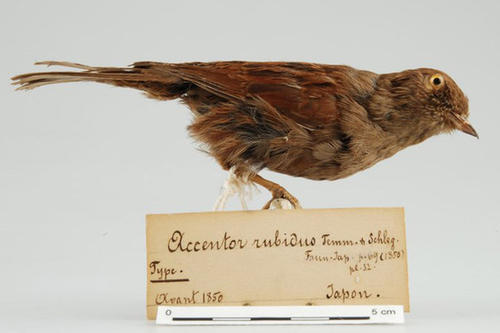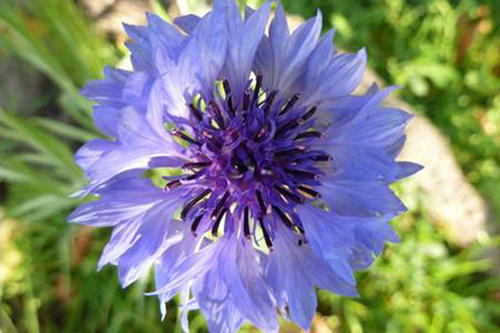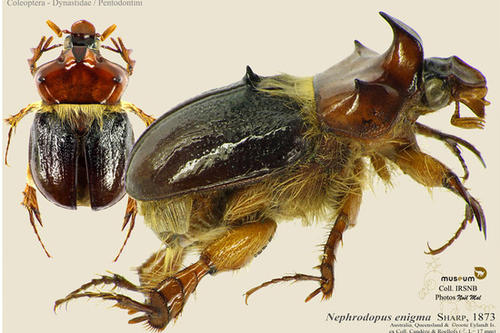Looking for Black-eyed Susans in 27 Languages
“OpenUp!” online database project launched at the Botanic Garden and Botanical Museum
May 26, 2011
The holotype of Rötelbraunelle (Accentor rubidus) from the collection of NCB Naturalis (Nederlands Centrum voor Biodiversiteit in Leiden)
Image Credit: NCB Naturalis
The cornflower (Centaurea cyanus) or "blue flower" was a central symbol of Romanticism. (Botanic Garden and Botanical Museum)
Image Credit: BGBM
This beetle, a Nephrodopus enigma Sharp, dates from 1873. (Royal Belgian Institute of Natural Sciences)
Image Credit: Noël Mal / Royal Belgian Institute of Natural Sciences
Two billion natural history objects, scientists estimate, slumber worldwide in numerous collections in museums and herbaria. In part, these are objects – including pressed plants, stuffed animals, drawings, engravings – from the 17th and 18 centuries. The "OpenUp!" database project recently launched at the Botanic Garden and Botanical Museum (BGBM) of Freie Universität aims to digitalize about one million of these objects within the next three years.
The herbarium of the Botanic Garden and Botanical Museum (BGBM) of Freie Universität alone houses 3.5 million pressed plants. Naturalists like Johann Georg Forster, Alexander von Humboldt, and his French companion Aimé Bonpland brought them to the site from their extended study trips all over the world.
This represents a valuable collection of cultural heritage, much of it already present in multimedia format, so one might think it would already have a firm place in the European digital library Europeana. But that isn’t the case. “In fact, digitized natural history objects are absolutely underrepresented in Europeana so far,” says biologist and professor Walter Berendsohn, who is in charge of the department of biodiversity information technology at the BGBM and coordinates the “OpenUp!” EU project, which was officially launched in March.
“OpenUp!” aims to close the gap, making about a million of these natural science references – including over 20,000 audio files of animal sounds and 1,200 videos – available to the public via Europeana in the next three years. The project participants built the infrastructures necessary to this end, and a software program that enables this use was developed at the BGBM. Fifty scientists and scholars from twelve European countries are involved in the project, which is receiving a total of 3.5 million euros in funding from the European Union. Freie Universität also provided financial support for planning the project.
The project is putting culture and nature closer together. Wherever plants and animals appear in the fine arts, literature, and historical technology, “OpenUp!” will provide the pertinent expert knowledge from the natural science collections. Those who wish to read up on Shakespeare’s Romeo and Juliet, for instance, can find the answer to the lovers’ question of whether the call they heard came from a nightingale or a lark right away, thanks to audio files of birdcalls and birdsongs. Users can also get a view of the plants that Alexander von Humboldt described in detail and had engraved in copper.
One special feature: The search engine finds terms from the animal and plant kingdoms entered in any of the 27 official languages offered by Europeana’s search function. After all, how many of us know, for example, the Latin scientific name found in most specialized databases for the flower commonly called a Black-eyed Susan – Thunbergia alata? Or that the terms Quercus and Fraxinus refer to oak and ash trees, respectively? All of this information is already available today through the services provided by the Global Biodiversity Information Facility, but because the latter uses scientific names, the information is mainly used by scientists. The first data sets should be accessible via Europeana starting in early 2012.
Further Information
- Prof. Dr. Walter Berendsohn, Botanic Garden and Botanical Museum Berlin-Dahlem, Freie Universität Berlin, Tel.: +49 (0)30 / 838-50143, Email: w.berendsohn@bgbm.org



